- Subsurface nuclear war!
- History of nuclear demolition
- Connecting with 911
- Soviet Plowshare
- Connected articles
It is NUCLEAR FRACTURING, not hydraulic!
1. Subsurface nuclear war!
The ClimateControl for Fracking Mafia (CCFM) is conducting a nuclear war against the USA and the world. The nuclear bombing occurs subsurface, some kilometers deep, within the rock formations! The deadly effect comes slowly!
If we only calculate cautiously the amount of 2 million fracking wells, each with about 30 kilotons of nuclear explosives, that means about 60 million kilotons of nuclear bombing of the USA. The radioactive fallout of this subsurface atom bombs partly comes out with fracking gas and water
The single bomb may be much smaller than the known 30 kiloton one, but they use many of them and in larger areas, positioned in horizontal drill tunnels
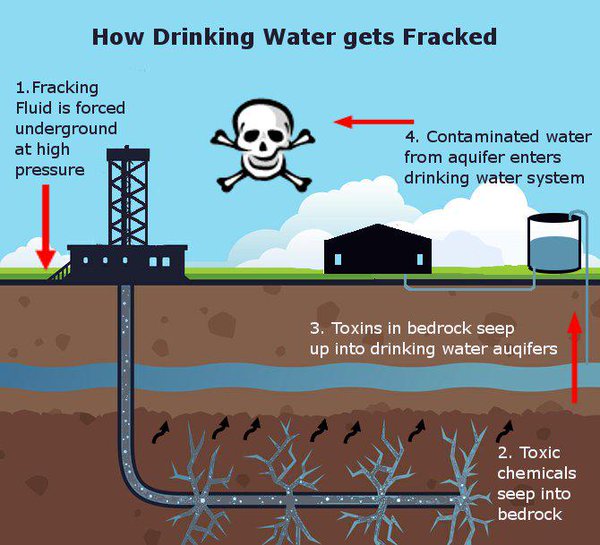
 |
| http://www.americanoilgas.net/aog/index.php/operations/horizontal-drilling |
The fallout is real, so why should we assume that nuclear blasting is not applied?
If they don't use nuclear bombs, do we have a clear information about the explosive munition and materials?
Why is that such a secret?
Why not use "mini nukes" for that?
They deliver the biggest blasting effect with the smallest munition size
This video clearly explains why fracking explosives CAN ONLY BE NUCLEAR!
THE ATOM UNDERGROUND
NUCLEAR FRACKING OF NATURAL GAS
Casing Conveyed Perforating NT-Flowgun
May 27, 2013
I don't doubt that, but I don't buy that this is all to do!
3-3/8" X 4 ft, 4 spf, 0° Gun System - Standard vs KODIAK (side view)
Owen Testing Solutions
Apr 23, 2014
Let's Blast! - Industrial Explosives During Blasting #Engineering
Clickmind
Deadly earthquakes and tsunamis have become the daily normal, wherever fracking exploration is conducted!
It is not my intention to connect things which don't belong together, but when different things have something in common, than the methods must be the same!
We have ..
- fracturing of rock,
- radioactivity,
- earthquakes!
Every fracking site is a Ground Zero point!
2. History of nuclear demolition
In Soviet Union, nuclear demolitions were used for building artificial lakes, subsurface gas depots, reshaping river beds.
atomcentral
Mar 17, 2013
The Soviets and the USA had an agreement about civil use of nuclear technology up to 150 Kilotons of power
The USA allowed it to be used for demolition of skyscrapers. The history of gas production from deep subsurface begins with Gasbuggy project to evaluate the feasibility of nuclear demolitions for fracturing gas bearing rock formations.
NUCLEAR BOMB FRACKING ATOMIC ENERGY COMMISSION PROJECT GASBUGGY 27544
PeriscopeFilm
Feb 8, 2017
"This film, "The Resourceful Atom: Project Gasbuggy" documents an underground nuclear detonation carried out by the United States Atomic Energy Commission on December 10, 1967 in rural northern New Mexico. It was part of Operation Plowshare, a program designed to find peaceful uses for nuclear explosions.
Gasbuggy was carried out by the Lawrence Radiation Laboratory and the El Paso Natural Gas Company, with funding from the Atomic Energy Commission. Its purpose was to determine whether controlled nuclear explosions could be useful in loosening rock formations for the sake of natural gas extraction. In modern terms, it would be called a form of nuclear fracking.
This film is part of the Periscope Film LLC archive, one of the largest historic military, transportation, and aviation stock footage collections in the USA. Entirely film backed, this material is available for licensing in 24p HD, 2k and 4k. For more information visit http://www.PeriscopeFilm.com"
Just by fluid no rock can be brocken! The fluid comes after demolition!
50 years ago, nuclear blasting for gas boomed. Today it’s a bust.
https://www.sciencenews.org/article/50-years-ago-nuclear-blasting-gas-boomed-today-its-bust
"NUCLEAR FRACKING In 1967, scientists lowered a 29-kiloton nuclear device deep underground, then detonated it at a depth of 4,240 feet. The explosion was intended to stimulate production of natural gas, as part of Project Gasbuggy"
"Atom blast for gas
A pair of simultaneous nuclear explosions, one more than 1.6 miles underground and the other 1,000 feet above it, have been proposed as a way to extract huge quantities of natural gas from subterranean rock. Each blast would be … about 2.5 times the size of the bomb used at Hiroshima. By breaking up tight gas-bearing rock formations, a flow of presently inaccessible gas may be made available.… A single-blast experiment, called Project Gasbuggy, is already planned. — Science News, December 17, 1966"
"Update On December 10, 1967, Project Gasbuggy went ahead, with a 29-kiloton nuclear explosion deep underground in northwestern New Mexico. The blast released natural gas, but the gas was radioactive. The area is still regularly monitored for radioactive contamination. Today, natural gas trapped below Earth’s surface is often extracted via fracking, which breaks up rock using pressurized fluid (SN: 9/8/12, p. 20). Though less extreme, potential links to drinking water contamination and earthquakes have stoked fears about the technique"
Project Gasbuggy
https://en.wikipedia.org/wiki/Project_Gasbuggy
"Project Gasbuggy was an underground nuclear detonationcarried out by the United States Atomic Energy Commission on December 10, 1967 in rural northern New Mexico. It was part ofOperation Plowshare, a program designed to find peaceful uses for nuclear explosions[1]"
"Gasbuggy was carried out by the Lawrence Radiation Laboratory and the El Paso Natural GasCompany, with funding from the Atomic Energy Commission. Its purpose was to determine if nuclear explosions could be useful in fracturing rock formations for natural gas extraction[2]The site, lying in the Carson National Forest, is approximately 34 km (21 mi) southwest of Dulce, New Mexico and 87 km (54 mi) east of Farmington, and was chosen because natural gas deposits were known to be held in sandstone beneath Leandro Canyon[3] A 29 kt (120 TJ) device was placed at a depth of 1,288 m (4,227 ft) underground,[4] then the well was backfilled before the device was detonated; a crowd had gathered to watch the detonation from atop a nearby butte"
"The detonation took place after a couple of delays, the last one caused by a breakdown of the explosive refrigeration system. The detonation produced a rubble chimney that was 24 m (80 ft) wide and 102 m (335 ft) high above the blast center[5]"
"Following the Project Gasbuggy test, two subsequent nuclear explosion fracturing experiments were conducted in western Colorado in an effort to refine the technique. They were Project Rulison in 1969 and Project Rio Blanco in 1973. In both cases the gas radioactivity was still seen as too high and in the last case the triple-blast rubble chimney structures disappointed the design engineers. Soon after that test the ~ 15-year Project Plowshare program funding dried up.
These early fracturing tests were later superseded by hydraulic fracturing (fracking) technologies"
PETROLEUM TECHNOLOGY
Project Gasbuggy tests Nuclear Fracking
https://aoghs.org/technology/project-gasbuggy/
"Project Gasbuggy was the first in a series of Atomic Energy Commission downhole nuclear detonations to release natural gas trapped in shale. This was “fracking” late 1960s style"

"Scientists lower a 13-foot by 18-inches diameter nuclear warhead into a well in New Mexico. The experimental 29-kiloton Project Gasbuggy device will be detonated at a depth of 4,240 feet"
"The underground detonation was part of a bigger program begun in the late 1950s to explore peaceful uses of nuclear explosions"
"The Hiroshima bomb was about 15 kilotons"
"Plowshare Program
The 1967 experimental explosion in New Mexico was part of a wider set of experiments known as Plowshare, a program established by the Atomic Energy Commission in 1957 to explore the constructive use of nuclear explosive devices
“The reasoning was that the relatively inexpensive energy available from nuclear explosions could prove useful for a wide variety of peaceful purposes,” notes a report later prepared for the U.S. Department of Energy. From 1961 to 1973, researchers carried out dozens of separate experiments under the Plowshare program – setting off 29 nuclear detonations
Most of the experiments focused on creating craters and canals. Among other goals, it was hoped the Panama Canal could be inexpensively widened. “In the end, although less dramatic than nuclear excavation, the most promising use for nuclear explosions proved to be for stimulation of natural gas production,” explains the September 2011 government report"
"In 1969, Project Rulison – at a site near Rulison, Colorado – detonated a 43-kiloton nuclear device almost 8,500 feet underground to produce commercially viable amounts of natural gas"
"The May 1973 Rio Blanco test consisted of the nearly simultaneous detonation of three 33-kiloton devices in a single well, according to the Office of Environmental Management. The explosions occurred at depths of 5,838, 6,230, and 6,689 feet below ground level. It would prove to be the last experiment of the Plowshare program"
"Although a 50-kiloton nuclear explosion to fracture deep oil shale deposits – Project Bronco – was proposed, it never took place. Growing knowledge (and concern) about radioactivity ended these tests for the peaceful use of nuclear explosions. The Plowshare program was canceled in 1975"
"The 2011 U.S. Department of Energy report concludes:
.
.By 1974, approximately 82 million dollars had been invested in the nuclear gas stimulation technology program (i.e., nuclear tests Gasbuggy, Rulison, and Rio Blanco). It was estimated that even after 25 years of gas production of all the natural gas deemed recoverable, that only 15 to 40 percent of the investment could be recovered. At the same time, alternative, non-nuclear technologies were being developed, such as hydrofracturing. Consequently, under the pressure of economic and environmental concerns, the Plowshare Program was discontinued at the end of FY 1975"
"Project Gasbuggy

Government scientists believed a nuclear device would provide “a bigger bang for the buck than nitroglycerin” for fracturing dense shales and releasing natural gas. Los Alamos Lab photo"
"A September 1967 Popular Mechanics article had described how nuclear explosives could improve previous fracturing technologies, including gunpowder, dynamite, TNT – and fractures “made by forcing down liquids at high pressure”"

"An illustration from Popular Mechanics shows how a nuclear explosive would improve earlier technologies by creating bigger fractures and a “huge cavity that will serve as a reservoir for the natural gas”"
"“Geologists had discovered years before that setting off explosives at the bottom of a well would shatter the surrounding rock and could stimulate the flow of oil and gas,” Nelson explains"
"“It was believed a nuclear device would simply provide a bigger bang for the buck than nitroglycerine, up to 3,500 quarts of which would be used in a single shot,” Nelson notes"

"The 1967 nuclear detonation produced 295 million cubic feet of natural gas – and Tritium radiation contamination"
"“Today, all that remains at the site is a plaque warning against excavation and perhaps a trace of tritium in your milk,” Nelson adds in his 1999 article"
"The Department of Energy, which had hoped for much higher production, determined that Tritium radiation contaminated the gas. It flared – burned off – the gas during production tests that lasted until 1973"
"Tritium is a naturally occurring radioactive form of hydrogen. A 2012 the Nuclear Regulatory Commission report noted, “Tritium emits a weak form of radiation, a low-energy beta particle similar to an electron. The tritium radiation does not travel very far in air and cannot penetrate the skin.”"
"According to Nelson, radioactive contamination from the flaring “was miniscule compared to the fallout produced by atmospheric weapons tests in the early 1960s.”"
"From the well site, Holcomb called the test a success. “The well produced more gas in the year after the shot than it had in all of the seven years prior,” he told Nelson"
"Today, hydraulic fracturing – pumping a mixture of fluid and sand down a well at extremely high pressure – stimulates production of natural gas wells. Read more in Shooters – A “Fracking” History "
"Parker Drilling Rig No. 114
In 1969, Parker Drilling Company signed a contract with the U.S. Atomic Energy Commission to drill a series of holes up to 120 inches in diameter and 6,500 feet in depth in Alaska and Nevada for additional nuclear bomb tests. Parker Drilling’s Rig No. 114 was one of three special rigs built to drill the wells.
Founded in Tulsa in 1934 by Gifford C. Parker, by the 1960s Parker Drilling had set numerous world records for deep and extended-reach drilling. According to the Baker Library at the Harvard Business School, the company “created its own niche by developing new deep-drilling technology that has since become the industry standard.”"
Fracking Has an Enormous
Radioactive Waste Problem—Just Ask Kentucky
"Lax federal and state regulations have led to the illegal dumping of dirty drilling fluids"
By Lorraine Chow / AlterNet September 2, 2017, 11:30 PM GMT
http://www.alternet.org/environment/fracking-has-enormous-radioactive-waste-problem-just-ask-kentucky
"This produced water contains a cocktail of industry-secret chemicals, heavy metals and naturally occurring toxic or radioactive elements like selenium and radium. To deal with the fluids, energy companies either reuse it, store it in surface ponds, send it to wastewater treatment facilities, or truck it to deep injection wells"
"But these disposal methods aren’t always foolproof. A leaky pond or an ill-equipped wastewater treatment plant can inadvertently leach contaminants into groundwater or drinking water supplies, meaning public health and the environment could be at risk of exposure. And wastewater injection has been linked to a "induced" earthquakes in Arkansas, Colorado, Kansas, New Mexico, Ohio, Oklahoma and Texas""
Fracking can contaminate rivers and lakes with radioactive material, study finds
@montaukian Wednesday 12 July 2017 16:55 BST
http://www.independent.co.uk/news/science/fracking-dangers-environment-water-damage-radiation-contamination-study-risks-a7837991.html
"Stream sediments were found to be so radioactive they were nearly at the level that would require disposal in a specialist facility in some US statesIan Johnston Environment Correspondent "
“Stream sediments in Blacklick Creek immediately downstream of centralised waste treatment plant number one were found to contain [radium] levels that were about 200 times greater than activities measured in upstream and background sediments"
“Elevated concentrations of radium and other alkaline earth metals have now been detected in reservoir sediments about 19km farther downstream of this plant"
“Despite several other sources of contaminants such as coal bed methane, coal mine drainage, and flue gas desulfurization releases that can impact surface water quality, we document multiple lines of evidence that indicate the legacy of unconventional oil-and-gas wastewater disposal has impacted stream sediments and porewater [groundwater] on a watershed-scale”
3. Connecting with 911
Nuclear Demolition
https://wikispooks.com/wiki/Nuclear_Demolition#Nuclear_demolition_of_tall_buildings
"Nuclear demolition of tall buildings"
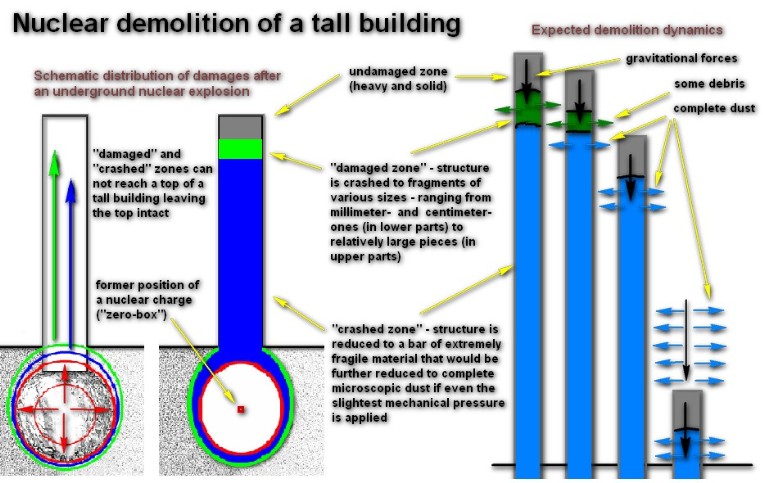
"Demolition of very tall buildings is more problematical. The “crushed zone” of a 150Kt nuclear detonation will only extend to a height of about 300 meters. In a taller building, this will result in a relatively undamaged and heavy top section, with a narrow “damaged zone” beneath it. These zones will produce debris – ranging in size from the millimeter/centimeter scale to relatively big sections all perched on top of a “crushed zone” extending down to ground level. The net result of such a nuclear demolition project should be an undamaged building top section that will lose its support base and fall downwards through the pulverized structure, scattering some debris and the masses of fine dust outward until it reaches the ground"
"It is clearly theoretically possible to completely pulverize structures taller than 300 meters but it would require a nuclear charge greater than 150Kt in TNT yield, which, as mentioned above, is not allowed under the terms of the “Peaceful Nuclear Explosions Treaty of 1976”. [1]"
Dimitri Khalezov Discusses NUCLEAR 9/11: Twin Tower Controlled Demolition Explained
Reality is Stranger Than Fiction: Dimitri Khalezov discusses 9/11 with George Mapp in Bangkok
by George Mapp on February 5th, 2011
http://themillenniumreport.com/2014/09/dimitri-khalezov-discusses-nuclear-911-twin-tower-controlled-demolition-explained/
"To get an additional confirmation you can look at a seditious diagram of the ‘70s that was used in a Wikipedia article dealing with nuclear tests:
http://en.wikipedia.org/wiki/Nuclear_tests
The diagram has its own web address:
http://en.wikipedia.org/wiki/File:Types_of_nuclear_testing.svg "
"Just look at Figure (2) – an underground nuclear explosion as depicted on that diagram. And pay particular attention to a skyscraper for some truly strange reason shown right above the spot of the underground nuclear explosion. The problem is that in the ‘70s (this diagram is from the ‘70s) the nuclear demolition of skyscrapers was a well-known fact, so the concept of it managed to find its way even to such diagrams… Hope I have answered your question?"
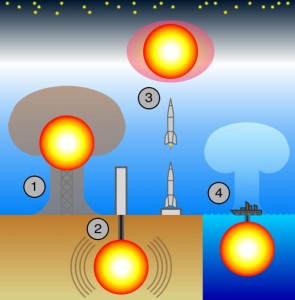
"Because the cavities were filled with extremely hot radioactive materials in liquid state and the firefighters were ordered to poor water into the WTC debris (and through them – into the cavities underground)"
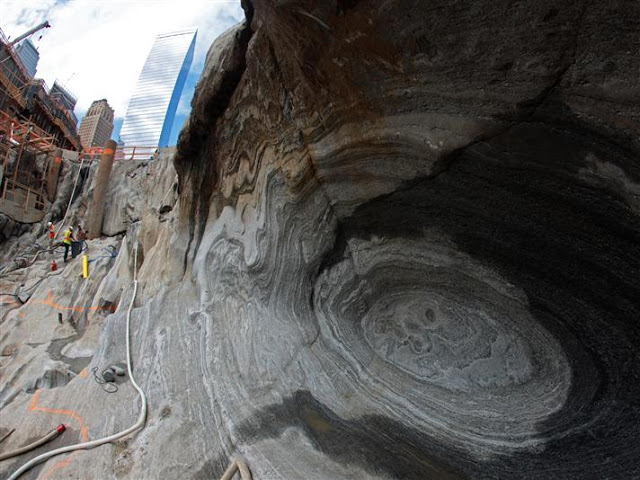
I hope it is evident that this rock was molten!!!
Listen and learn it from the expert!
WTC 9/11 MOLTEN METAL EVIDENCE | HIGH TEMPERATURES UNDER THE RUBBLE FOR MONTHS
First published at 19:43 UTC on April 24th, 2021.
9/11 - MOLTEN STEEL
First published at 02:51 UTC on June 15th, 2021.
Peaceful nuclear explosion
https://en.wikipedia.org/wiki/Peaceful_nuclear_explosion
"Peaceful nuclear explosions (PNEs) are nuclear explosions conducted for non-military purposes, such as activities related to economic development including the creation of canals. During the 1960s and 1970s, both the United States and the Soviet Union conducted a number of PNEs"
"In the PNE Treaty, the signatories agreed: not to carry out any individual nuclear explosions having a yieldexceeding 150 kilotons; not to carry out any group explosion (consisting of a number of individual explosions) having an aggregate yield exceeding 1,500 kilotons; and not to carry out any group explosion having an aggregate yield exceeding 150 kilotons unless the individual explosions in the group could be identified and measured by agreed verification procedures. The parties also reaffirmed their obligations to comply fully with the Limited Test Ban Treaty of 1963"
The day America was punked.
https://apunked.wordpress.com/craters/

Atomic Journeys - The Nevada Test Site
All of this gun smoke wasn't accidental.
— Isaac Ali 🇳🇿🇵🇸 إسحاق الجيزاني (@IsaacALawyer) April 12, 2025
Many knew the plan!
The Twin Towers were built to be demolished in a terrorist attack, and they were immediately rigged with explosives after their construction was completed.
----------
The scene in The Lone Gunmen, a spin-off of The X-Files, depicted a government conspiracy to hijack a commercial airliner from Boston and crash it into the World Trade Center, all to spark a profitable new war.
This aired on March 4, 2001, just 191 days before the 9/11 attacks.
---------
a Samuel L. Jackson spy movie predict 9/11
Samuel L. Jackson in the spy thriller The Long Kiss Goodnight, in 1996.
pic.twitter.com/lPldQIUxxw
Russian Plowshare Experiment - nuking a forest for a canal atomcentral, Mar 17, 2013
This is a Russian Plowshare test which set up nuclear explosions to carve a canal through a forest. Plowshare was the name of the program to find peaceful uses for nuclear explosives. Both the United States and Russia conducted Plowshare experiments in the 1960's and 1970's.
William Cooper, ex-naval intelligence officer, predicted 9/11 eleven weeks before it happened.
— ADAM (@AdameMedia) September 12, 2025
"Whatever is going to happen, they're going to blame on Osama bin Laden, don't believe it."
Four months later Cooper was kiIIed by undercover police. pic.twitter.com/d2vaq8qUCM


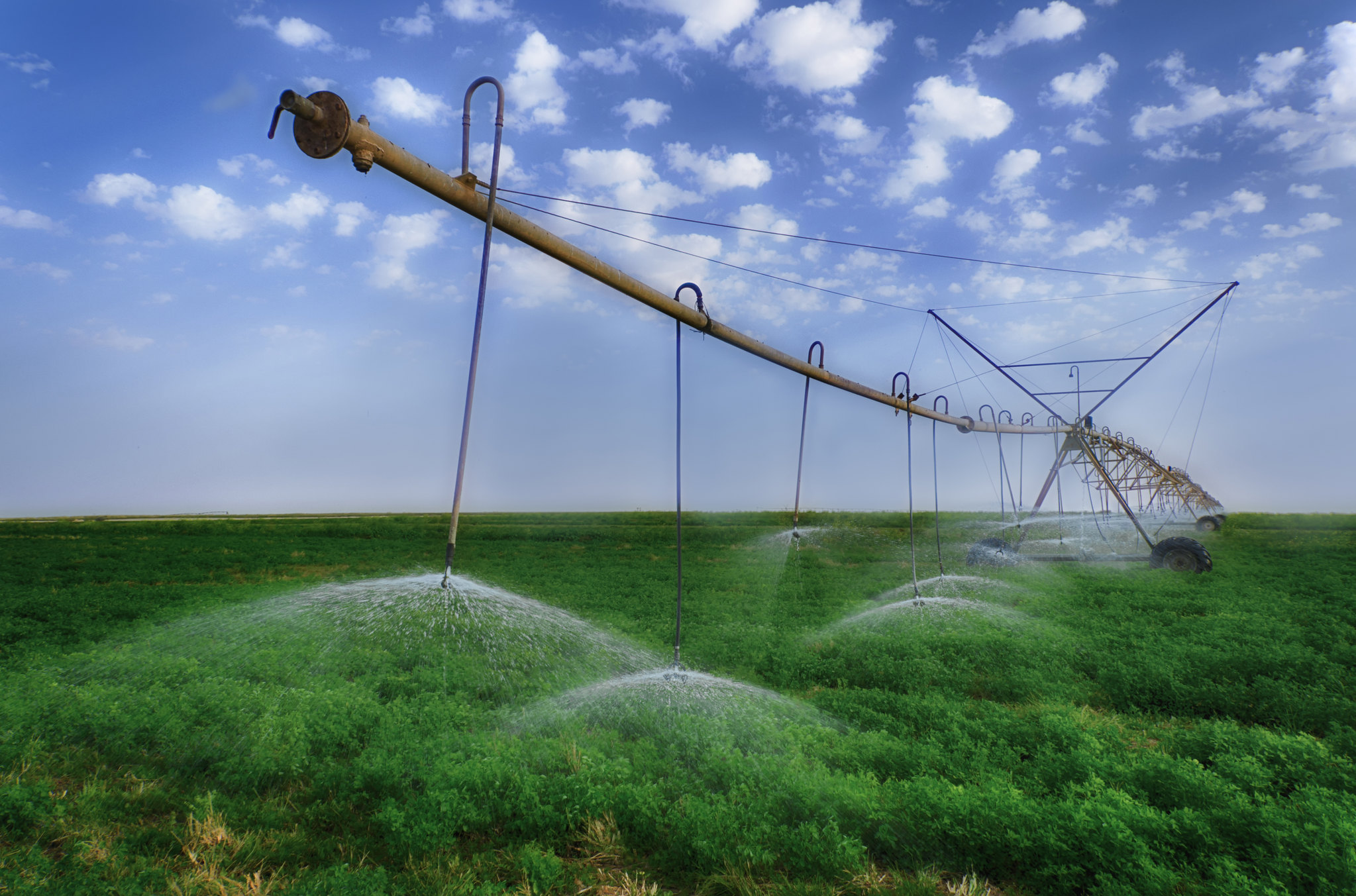
No comments:
Post a Comment